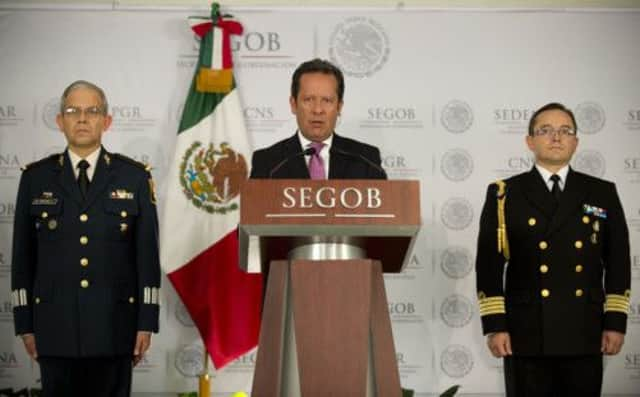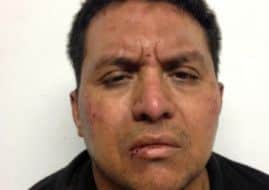Mexican drug cartel leader who ‘stewed’ his enemies


But now the leader of the leader of the Zetas sits in a heavily guarded prison cell, after being captured before dawn on Monday by Mexican marines. They mounted a helicopter interception of a pick-up truck with $2 million (about £1.3m) in cash in the countryside outside the border city of Nuevo Laredo.
“Not a single shot was fired,” government spokesman Eduardo Sanchez said.
Advertisement
Hide AdAdvertisement
Hide AdIt was the first major blow against an organised crime boss by the administration of president Enrique Pena Nieto, which has struggled to drive down persistently high levels of violence after taking power last year.


Experts on the Zetas said the arrest – at least the eighth capture or killing of a high-ranking cartel leader since 2011 – could leave behind a series of cells scattered across northern Mexico without a central command but with the same appetite for kidnapping, extortion and other crimes against innocent people.
“It’s another link in the destruction of the Zetas as a coherent, identifiable organisation,” said Alejandro Hope, a former member of Mexico’s domestic intelligence service. “There will still be people who call themselves Zetas, bands of individuals who maintain the same modus operandi. There will be fights over illegal networks.”
The Zetas leader and his alleged accomplices were flown to Mexico City, where they are expected to eventually be tried in a closed system that usually takes years to prosecute cases, particularly high-profile ones.
Trevino Morales, also known as “Z-40”, is uniformly described as one of the two most powerful cartel heads in Mexico, the leader of a corps of special forces defectors who went to work for drug traffickers. They splintered off into their own cartel in 2010 and spread across Mexico, expanding from drug dealing into extortion, human trafficking and other activity.
Along the way, the Zetas committed some of the worst atrocities of Mexico’s drug war, leaving hundreds of bodies beheaded on roadsides or hanging from bridges and earning a reputation as the most terrifying of the country’s numerous cartels.
On Trevino Morales’s watch, 72 Central and South American migrants were slaughtered by the Zetas in the northern town of San Fernando in 2010. By the following year, federal officials announced the finding of 193 bodies buried in San Fernando, most belonging to migrants kidnapped off buses and killed by the Zetas, some because they refused to work as drug mules.
Mr Sanchez said Trevino Morales is charged with ordering the kidnapping and killing of the 265 migrants, along with numerous other charges of murder, torture and other crimes.
Advertisement
Hide AdAdvertisement
Hide AdTrevino Morales’s capture adds to the list of Zetas leaders who have been arrested or killed in recent years, including Zeta head Heriberto Lazcano, whose shooting by authorities last year left Trevino Morales in charge.
The debilitation of the Zetas has been widely seen as strengthening the country’s most wanted man, Sinaloa cartel head Joaquin “El Chapo” Guzman, who has overseen a vicious turf war with the Zetas from suspected hideouts in rugged western Mexico.
Trevino Morales is expected to be succeeded by his younger brother, Omar, a former low-ranking turf boss who is seen as a far weaker figure.
Miguel Angel Trevino Morales began his career as a teenage runner for the Los Tejas gang, which controlled most crime in his hometown across the border from Laredo, Texas. He soon graduated from washing cars and running errands to running drugs across the border, and was recruited into the Matamoros-based Gulf cartel.
Trevino Morales then joined the Zetas, who worked as hit men and bodyguards for the Gulf cartel, in the late 1990s.
Stories about his brutality quickly became well-known. One technique he favoured was the “guiso” or stew, in which enemies would be placed in oil drums and burned alive, said a US law enforcement official in Mexico City. Others who crossed him were beaten to death with wooden planks, the official said.
Unlike most top Zetas, Trevino Morales had no military background, building up a power base within the gang as a financial fixer and logistics expert, and helping extend its operations running cocaine and crystal meth into the United States and Europe.
Trevino Morales’s reputation for extreme violence also helped cement his rise.
“He’s the most sadistic of them,” US political scientist and Zetas expert George W Grayson said. “He really gets off on inflicting diabolical pain on people.”